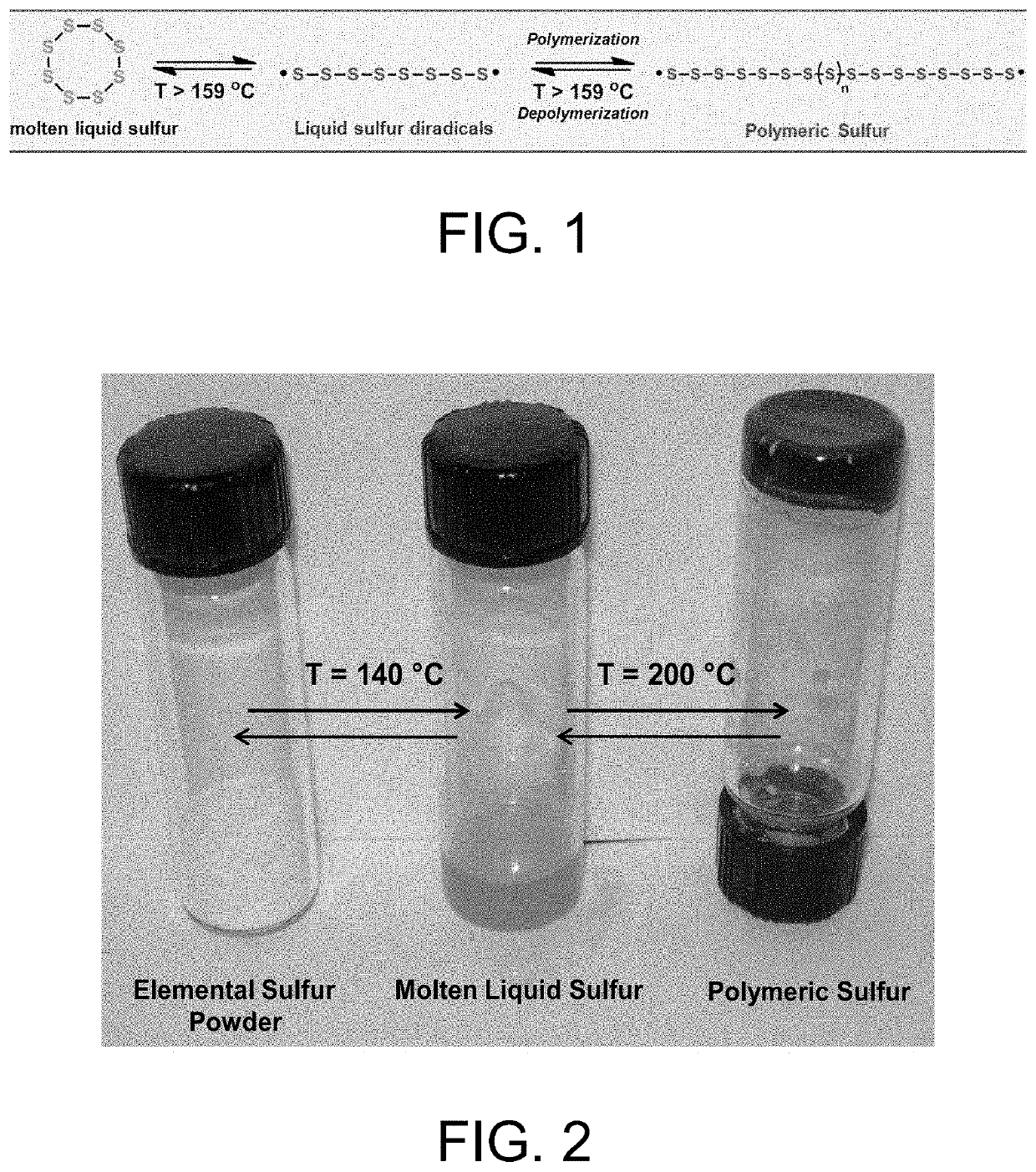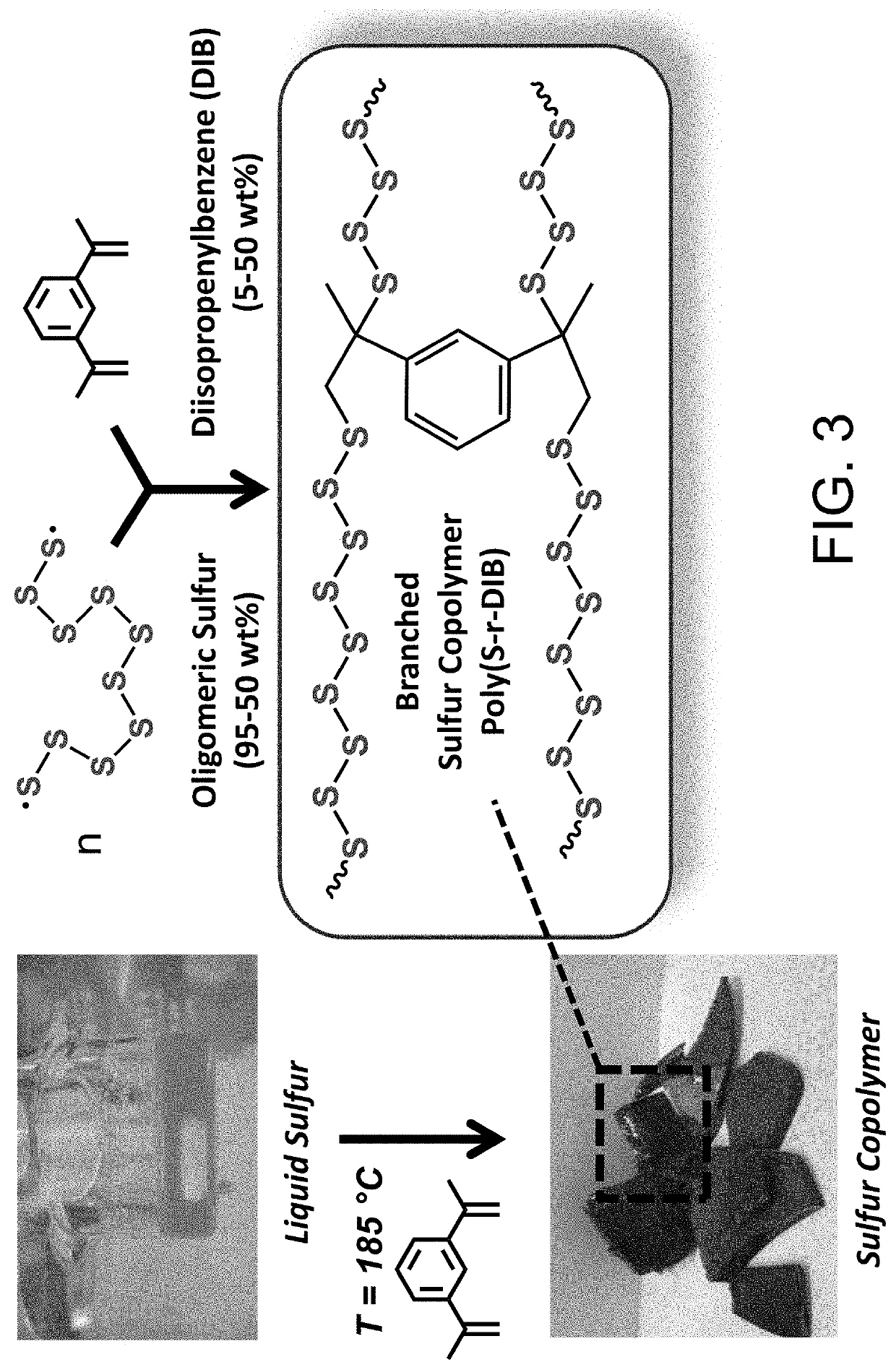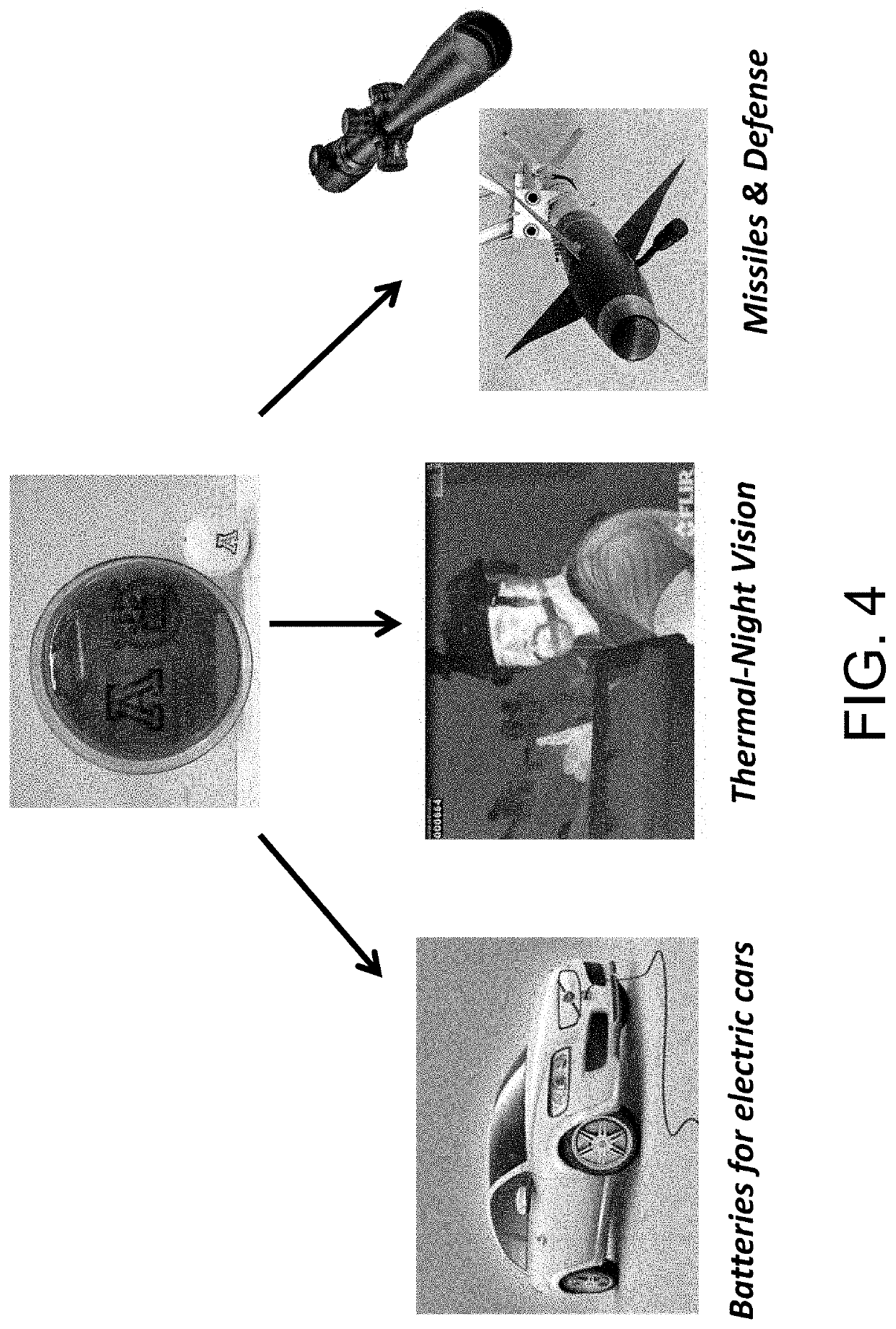Sulfur composites and polymeric materials from elemental sulfur
a technology of elemental sulfur and composites, applied in the field of sulfur composites and polymeric materials, can solve the problems of difficult processing of elemental sulfur, limited number of synthetic methods available to utilize and modify elemental sulfur, and poor solid state mechanical properties of crystalline solids, and achieve the effect of enhancing electroactive cathode materials
- Summary
- Abstract
- Description
- Claims
- Application Information
AI Technical Summary
Benefits of technology
Problems solved by technology
Method used
Image
Examples
example 1
rocedure for the Inverse Vulcanization of Sulfur with Alkynes
[0096]A 5 mL vial equipped with a magnetic stir bar was loaded with sulfur (800 mg, 3.125 mmol) and 1-phenylpropyne (0.20 mL, 1.72 mmol). The mixture was stirred at 175° C. for 7 min yielding a very viscous red transparent fluid. The reaction was quenched by cooling to −78° C. The resulting poly(sulfur-co-phenylpropyne) was then recovered from the vial yielding a reddish brown solid (949 mg, 96%).
Monoalkyne Examples
[0097]
Dialkyne Examples
[0098]
Multi-Alkyne Examples
[0099]
example 2
rocedure for the High Temperature Preparation of Poly(Sulfur-Random-(m-Phenylenediamine) (Poly(S-r-m-PDA)) Copolymers
[0100]To a 24 mL glass vial equipped with a magnetic stir bar were added sulfur (S8, masses detailed below) and m-phenylenediamine (m-PDA, masses detailed below). The reaction was heated to about T=185° C. in a thermostat oil bath and the resulting mixture was stirred at about T=185° C. for 8-10 minutes, until bubbling ceased and vitrification of the reaction media occurred.
Preparation of poly(S-r-m-PDA) with 50-wt % m-PDA
[0101]The copolymerization was carried out by following the general method written above with S8 (2.5 g, 9.75 mmol) and m-PDA (2.5 g, 23.13 mmol) to afford a blood red solid.
Preparation of poly(S-r-m-PDA) with 33.3-wt % m-PDA
[0102]The copolymerization was carried out by following the general method written above with S8 (2.5 g, 9.75 mmol) and m-PDA (1.25 g, 11.56 mmol) to afford a blood red solid.
Preparation of poly(S-r-m-PDA) with 28.57-wt % m-PDA
[0...
example 3
rocedure for the High Temperature Preparation of poly(sulfur-random-(4,4′-thiobisbenzenethiol) (poly(S-r-TBBT)) Copolymers
[0108]To a 24 mL glass vial equipped with a magnetic stir bar were added sulfur (S8, masses detailed below) and 4,4′-thiobisbenzenethiol (TBBT, masses detailed below). The reaction was heated to T=185° C. in a thermostat oil bath and the resulting mixture was stirred at T=185° C. for 8-10 minutes, until bubbling ceased.
Preparation of poly(S-r-TBBT) with 50-wt % TBBT
[0109]The copolymerization was carried out by following the general method written above with S8 (0.50 g, 1.95 mmol) and TBBT (0.5 g, 2.00 mmol) to afford a yellow solid.
Preparation of poly(S-r-p-PDA) with 33.3-wt % TBBT
[0110]The copolymerization was carried out by following the general method written above with S8 (0.66 g, 2.57 mmol) and TBBT (0.33 g, 1.32 mmol) to afford a yellow solid.
Preparation of poly(S-r-p-PDA) with 28.57-wt % TBBT
[0111]The copolymerization was carried out by following the gener...
PUM
| Property | Measurement | Unit |
|---|---|---|
| charge capacity | aaaaa | aaaaa |
| charge capacity | aaaaa | aaaaa |
| boiling point | aaaaa | aaaaa |
Abstract
Description
Claims
Application Information
 Login to View More
Login to View More - R&D
- Intellectual Property
- Life Sciences
- Materials
- Tech Scout
- Unparalleled Data Quality
- Higher Quality Content
- 60% Fewer Hallucinations
Browse by: Latest US Patents, China's latest patents, Technical Efficacy Thesaurus, Application Domain, Technology Topic, Popular Technical Reports.
© 2025 PatSnap. All rights reserved.Legal|Privacy policy|Modern Slavery Act Transparency Statement|Sitemap|About US| Contact US: help@patsnap.com



